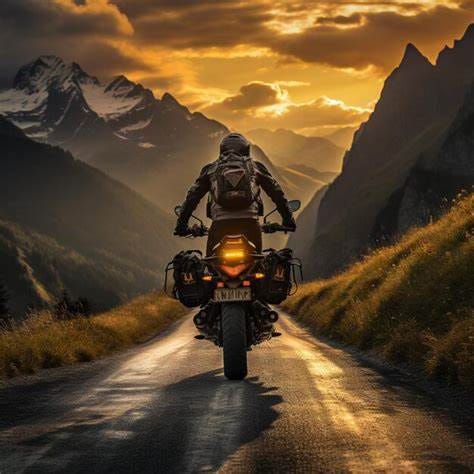The Rise of Adventure Motorcycling: How Riders Are Turning Gravel into Gold in 2025
Rafael Benavente
The Rise of Adventure Motorcycling: How Riders Are Turning Gravel into Gold in 2025
In 2025, a new kind of motorcyclist is dominating the roads—and the trails. Adventure motorcycling, or ADV, is more than just a trend; it's a movement that merges freedom, rugged exploration, and modern technology. Riders are trading in heavy cruisers and sport bikes for dual-sport machines capable of handling anything from urban commutes to mountain passes. With manufacturers unveiling feature-packed ADV models and an entire lifestyle forming around the culture, it’s clear that gravel has become the new gold.
1. What Is Adventure Motorcycling?
Adventure motorcycles are designed for both on-road touring and off-road capability. Unlike traditional street bikes, these machines feature high ground clearance, longer suspension travel, and upright ergonomics. They come equipped with features like crash protection, luggage racks, GPS units, heated grips, and multiple ride modes. For riders, this means the freedom to explore remote destinations while staying comfortable over long distances.
2. 2025 Market Trends: ADV Goes Mainstream
Adventure bikes are now outselling many traditional segments like sport and cruiser bikes. Leading models include the BMW R 1300 GS, Yamaha Ténéré 700 World Raid, Honda XL750 Transalp, and the KTM 890 Adventure R. These bikes combine lightweight frames with large fuel tanks, ABS off-road modes, and rugged tires. Riders in 2025 are also increasingly drawn to ADV for the sense of independence and digital nomad lifestyle it supports.
3. Why Riders Are Making the Switch Seasoned riders often describe ADV trips as transformative—not just rides, but experiences that test endurance, navigation, and decision-making. Unlike track racing or city cruising, adventure riding invites exploration into unknown terrain, often leading to connections with local communities, wildlife encounters, and personal growth. It's a style of riding that balances adrenaline with introspection.
Adventure riding is about self-reliance and storytelling. In an era of digital overload, more riders are seeking real-world escapes—routes where cell service drops and the journey becomes the focus. The ADV scene offers a unique blend of solitude, skill, and thrill. Riders often document their travels, leading to an explosion of ADV YouTubers, influencers, and podcast storytellers. The gear ecosystem has also evolved: pannier systems, hydration packs, dual-sport boots, and wearable tech are standard kit for today’s adventurers.
4. The Investment Angle
Beyond lifestyle, ADV bikes offer solid value. Limited-run models like the Africa Twin Rally or KTM’s factory editions often hold their resale price better than standard cruisers. The aftermarket industry is booming too—touring upgrades, luggage systems, and rugged suspension kits are in high demand. Companies like Mosko Moto and Giant Loop have built cult followings with their durable, purpose-built gear.
5. Best Adventure Routes in the U.S. and Abroad
The U.S. is a playground for ADV riders. Popular routes include the Idaho and Utah Backcountry Discovery Routes (BDRs), Colorado’s Alpine Loop, and Oregon’s high desert trails. Internationally, riders flock to Patagonia for its raw landscapes, Morocco’s sand tracks, and the transcontinental Silk Road which connects Europe to Asia. Many of these routes are mapped by the ADV community and supported by digital GPS platforms and forums.
6. What’s Next for Adventure Motorcycling?
Looking forward, adventure riding is set to expand even further. Electric adventure bikes are on the horizon, with lightweight builds and extended-range battery solutions in development. Content creation continues to fuel the culture—riders document their multi-continent rides for growing YouTube audiences. ADV bikes are also playing a role in eco-tourism and sustainable travel, offering low-impact exploration of protected environments. In 2025, the ADV scene is not just alive—it’s accelerating into the future with a trail-tested roar.
Manufacturers are also investing in adaptive ride technology, including semi-autonomous route suggestions, smart helmet integration, and terrain-detecting suspension systems. As infrastructure for off-grid travel improves and more charging stations appear in remote regions, electric ADV bikes will become viable for longer trips. Meanwhile, digital platforms are helping riders plan, track, and share their journeys, reinforcing the communal spirit that defines this segment.
By Rafael Benavente

